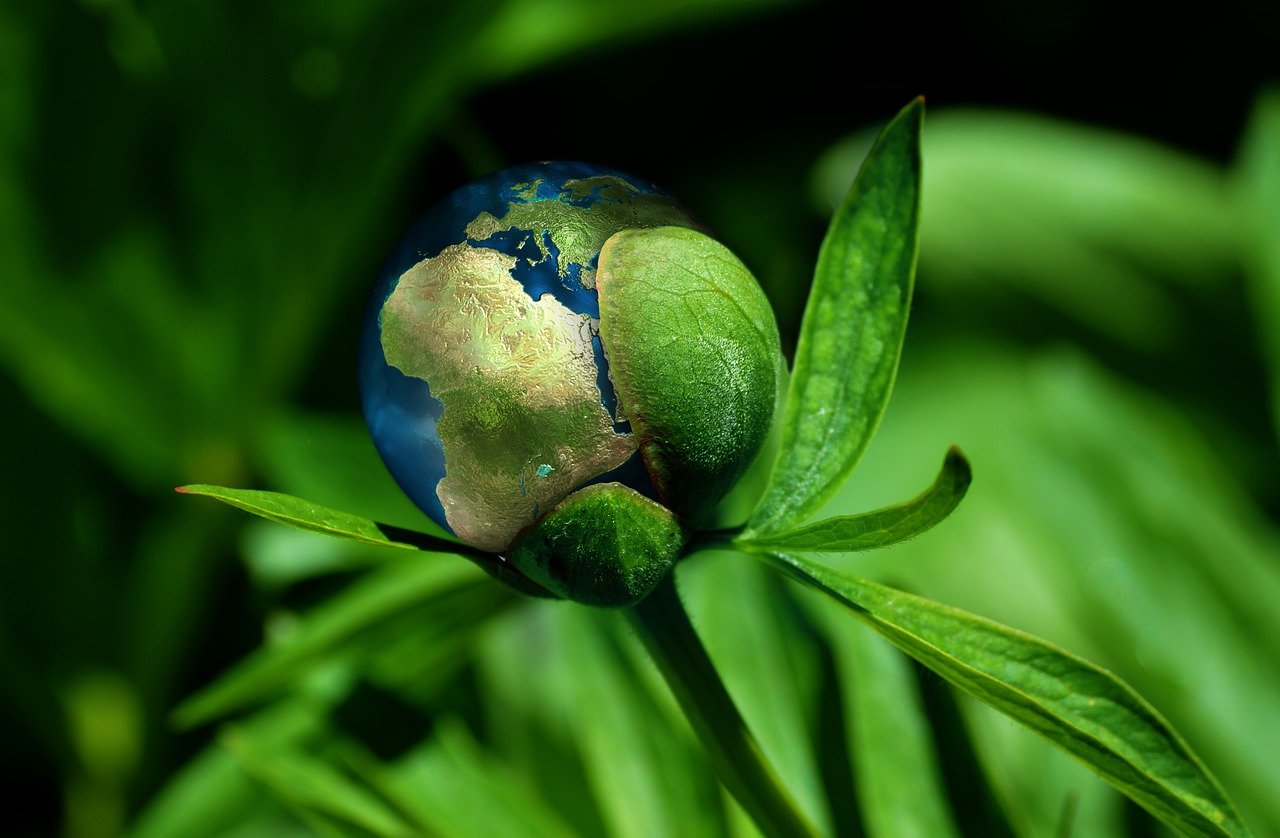Welcome to the magical world of Disney, where dreams come true, and now, where sustainability takes center stage. In recent years, Disney has undergone a remarkable transformation, committing itself to environmentally friendly practices across its iconic parks. In this journey through the enchanted realms of Disney, we’ll explore the company’s initiatives, delve into its specific goals for 2030, understand the strategies to reduce greenhouse gas emissions, and uncover the challenges and external factors that shape Disney’s path towards sustainability.
A brief summary of all initiatives, scroll for more information below:
| Initiative | Percentage/Goal |
|---|---|
| Reducing Emissions | 40% of annual power from solar |
| Conserving Water | Advanced irrigation, reclaimed water |
| Reducing Waste | 60% diversion from landfills |
| Sustainable Design | Integration into new projects |
| Eco-Friendly Visitor Practices | Plastic-free souvenirs, reusable bottles, app usage |
| 2030 Sustainability Goals | |
| Net-Zero Emissions | Direct operations by 2030 |
| Zero-Carbon Electricity | 100% purchase or production by 2030 |
| Reduce Scope 3 Emissions | “Well below 2°C” scenario by 2030 |
| Watershed Stewardship Strategies | Implementation at high-impact sites |
| Zero Waste to Landfill | Wholly owned and operated entities by 2030 |
| Reduce Single-Use Plastic | Parks and resorts by 2025, eliminate on cruise ships |
| Greenhouse Gas Emission Reduction | 46.2% reduction by 2030 |
| Strategies to Achieve Reduction | |
| Investing in Renewable Energy | New solar facilities, 40% of power supply |
| Purchasing or Producing Zero-Carbon Electricity | 100% by 2030 |
| Reducing Fuel Use | Efficiency solutions, electrification, clean power |
| Investing in Low Carbon Fuel Innovation | Collaboration, innovation |
| Sustainable Design in New Construction | Minimize energy consumption |
| Reducing Indirect Emissions | Sustainable purchasing policy at Disneyland Paris |
| Measurement and Tracking Progress | |
| Submission to SBTi | Validation of goals by Science-Based Targets initiative |
| Monitoring and Aggregating ESG Keywords | Analysis of ESG factors by GlobalData |
| Regular Review and Communication of Targets | Ensuring alignment with business activity |
| Collaboration with Conservation International | Supporting forest conservation projects |
| Fuel Efficiency and Energy Conservation Measures | Utilizing low-emission technologies for cruise line |
Disney’s Green Initiatives: A Glimpse into the Magic of Sustainability
Reducing Emissions
Disney’s commitment to sustainability shines brightly in its efforts to reduce emissions. For instance, at Walt Disney World Resort and Reedy Creek Improvement District, a partnership with local utility companies is giving rise to two new 75MW solar facilities. These, combined with existing ones, are set to supply nearly 40% of the resort’s annual power consumption, a remarkable leap towards a greener future.
Conserving Water
Water conservation takes center stage at Disney, where initiatives like the use of reclaimed water and advanced irrigation control systems at Disneyland Resort showcase a commitment to reducing potable water consumption. Even the choice of artificial turf contributes to this aquatic conservation effort, demonstrating a holistic approach to sustainability.
Reducing Waste
Disney’s journey towards zero waste is a tale of commitment and action. Since 2009, the company has been striving to achieve this goal, with a 2020 announcement targeting a 60% diversion of trash from landfills and incinerators. Notably, over 125K tons of operational waste have been diverted from landfills in FY22. Food waste at Walt Disney World Resort finds a second life at an off-site commercial composting facility, transforming into nutrient-rich soil.
Sustainable Design
As Disney continues to weave new tales and construct magical experiences, it is equally dedicated to implementing sustainable design practices. This commitment not only minimizes environmental footprints but also sets a standard for future construction projects in the entertainment industry.
Encouraging Eco-Friendly Behavior
Beyond internal efforts, Disney extends its commitment to sustainability to its visitors. Encouraging zero-waste vacations, the company advocates for plastic-free souvenirs, reusable water bottles, and embraces technology like the My Disney Experience app to minimize paper use, inviting guests to be active participants in the sustainability narrative.
Disney’s 2030 Vision: Setting Sail Towards a Greener Horizon
Disney’s sustainability journey extends beyond the current initiatives, with a set of specific goals outlined for 2030. These ambitious targets showcase Disney’s commitment to making a substantial impact on its environmental footprint:
- Net-Zero Emissions: Disney aims to achieve net-zero emissions for direct operations at all its entities by 2030, a commitment that echoes through the magical realms it creates.
- Zero-Carbon Electricity: The company is determined to purchase or produce 100% zero-carbon electricity by 2030, illuminating its path with sustainable energy sources.
- Reducing Scope 3 Emissions: Aligning with a “well below 2°C” scenario, Disney sets its sights on reducing Scope 3 emissions by 2030, showcasing a dedication to broader industry impact.
- Watershed Stewardship Strategies: Recognizing the impact of its operations on local ecosystems, Disney commits to implementing site-specific watershed stewardship strategies at high-impact sites, ensuring a harmonious coexistence with nature.
- Zero Waste to Landfill: Disney aspires to achieve zero waste to landfill for its wholly owned and operated parks, resorts, and Disney Cruise Line by 2030, a commitment that extends the magic to environmental stewardship.
- Reducing Single-Use Plastic: By 2025, Disney aims to reduce and eliminate single-use plastics in its parks, resorts, and cruise ships, steering away from the environmental perils associated with disposable plastics.
These goals exemplify Disney’s bold and visionary approach to sustainability, setting a precedent for the entertainment industry.
Strategies to Reduce Greenhouse Gas Emissions by 46.2% by 2030
Disney’s commitment to reducing greenhouse gas emissions by 46.2% by 2030 is not a fairy tale but a tangible plan grounded in strategic initiatives:
Investing in Renewable Energy
A cornerstone of Disney’s strategy is its investment in renewable energy. Partnerships with local utility companies for the development of solar facilities demonstrate the company’s dedication to clean and sustainable power sources.
Purchasing or Producing Zero-Carbon Electricity
Disney’s pledge to purchase or produce 100% zero-carbon electricity is a pivotal step in decarbonizing its direct operations. This commitment ensures that every flicker of light within the magical kingdom is powered by sustainable energy.
Reducing Fuel Use
Efficiency is the wand Disney waves to reduce fuel use across its operations. From identifying cost-effective solutions in studios and offices to electrifying vehicles and incorporating clean mobile power, Disney embraces a multi-faceted approach to reducing fuel-related emissions.
Investing in Low Carbon Fuel Innovation
Collaboration and innovation take center stage in Disney’s approach to reducing emissions. The company actively collaborates with industry groups and invests in low carbon fuel innovation, contributing to a cleaner and greener future.
Implementing Sustainable Design
Every new construction project under Disney’s enchantment spell incorporates sustainable design, minimizing energy consumption and leaving a smaller environmental footprint.
Reducing Indirect Emissions
Disneyland Paris, a jewel in Disney’s crown, is on a mission to reduce its indirect emissions (Scope 3). From goods and services to food & beverage, a comprehensive sustainable purchasing policy is in place to achieve significant reductions in emissions.
These strategies showcase Disney’s holistic approach to achieving its greenhouse gas emission reduction goals, demonstrating that magic and sustainability can indeed coexist.
Measuring and Tracking Progress: The Metrics of Magic
In the enchanted realm of sustainability, Disney employs various strategies to measure and track its progress towards reducing greenhouse gas emissions:
Submission to the Science-Based Targets Initiative (SBTi)
Disney doesn’t just rely on magic; it seeks validation from the Science-Based Targets Initiative. By submitting its goals to this initiative, Disney undergoes independent assessment and validation against the latest climate science, ensuring its targets are grounded in environmental reality.
Monitoring and Aggregating ESG Keywords
The use of Environmental, Social, and Governance (ESG) keywords is akin to reading the stars in Disney’s sustainability journey. By closely monitoring and aggregating mentions of net zero and associated ESG keywords, Disney gains valuable insights into its ESG performance, ensuring a data-driven approach to sustainability.
Regular Review and Communication of Targets
Disney understands that the magic lies not just in setting goals but in continuously reviewing and communicating them. By aligning targets with business activity and evolving as the company becomes better informed through research and evaluation, Disney ensures its sustainability journey remains dynamic and impactful.
Collaboration with Conservation International
In its commitment to addressing emissions and combating climate change, Disney extends its magic wand to support Conservation International’s forest conservation projects. This collaboration includes retiring carbon credits in Disney’s name, contributing to the company’s broader strategy to offset its carbon footprint.
Fuel Efficiency and Energy Conservation Measures
Disney’s cruise line sets sail towards sustainability through measures such as low-emission liquefied-natural gas (LNG), demand-based heating and cooling, hydrodynamic hull and propulsion, and re-purposing excess engine heat. These measures not only ensure fuel efficiency but also contribute to tracking and reducing greenhouse gas emissions.
These strategies weave a tapestry of measurement and accountability into Disney’s sustainability narrative, ensuring that every spell cast is backed by tangible progress.
As Disney ventures deeper into the enchanted forest of sustainability, it encounters several challenges:
Updating Existing Assets
Balancing the old and the new presents a challenge for Disney. As it continues to grow, updating existing assets to meet sustainability goals requires strategic planning and substantial investments.
Dependence on External Factors
The success of Disney’s sustainability goals is intertwined with external factors. From supplier actions to transitions to cleaner fuels, Disney’s ability to achieve its goals relies on factors beyond its immediate control.
Economic Progress and Social Development
Sustainability is not just about the environment; it encompasses economic progress and social development. Disney’s journey towards true sustainability must balance ecological management with considerations for culture, conservation, and livability.
Public Perception and Controversies
Disney’s public image can impact its sustainability efforts. Past controversies and ongoing behavior pose material risks in the realms of social and governance activities, emphasizing the need for continuous improvement.
Theme Park Sustainability
The expansive and iconic theme parks demand substantial investment for maintenance and expansion. As society becomes more environmentally conscious, the ecological impact of these parks becomes a focal point of scrutiny.
Ethical Consumption and Merchandising
The vast array of Disney merchandise raises questions about ethical sourcing and environmental impact. Ensuring socially and environmentally responsible production becomes crucial for maintaining Disney’s reputation.
Transparency and Accountability
Addressing moral challenges requires transparency and accountability. Disney’s engagement with diverse communities and cultural experts, coupled with acknowledging past mistakes, is essential for fostering an inclusive and culturally sensitive environment.
Adapting to New Technologies
Staying at the forefront of technology while adapting to a global labor shortage poses challenges for Disney. The pace of technological development often outstrips the rate at which construction projects can be executed, demanding creative solutions.
Recovering from the Pandemic
The unprecedented challenge of recovering from the pandemic adds a layer of complexity. Disney must navigate the new normal, adjusting its approach to restore normal levels of profit for theme parks, movies, and streaming services.
These challenges weave a tapestry of complexity, demanding Disney’s attention and strategic prowess to ensure a successful and sustainable journey.
External Factors: The Unseen Forces in Disney’s Sustainability Saga
As Disney embarks on its sustainability quest, external factors cast shadows on the path ahead:
Actions by Suppliers
Disney’s sustainability goals are intricately connected to the actions of its suppliers. Collaborative efforts with suppliers become paramount in ensuring a unified commitment to sustainable practices.
Transitions to Cleaner Fuels
The transition to cleaner fuels is a critical external factor shaping Disney’s sustainability narrative. The availability and affordability of cleaner fuels directly impact the company’s ability to achieve its goals.
Economic Feasibility
The economic feasibility of sustainable practices and technologies is a significant external factor. Disney’s ability to invest in renewable energy and other sustainable initiatives hinges on the economic viability of these solutions.
Public Perception and Controversies
External forces shape public perception, and controversies can impact Disney’s sustainability efforts. Navigating these external influences requires strategic communication and continuous improvement.
Theme Park Sustainability
The impact of Disney’s theme parks on the environment is subject to external scrutiny. As societal awareness of environmental concerns grows, external pressures may influence the sustainability measures required in theme park operations.
Ethical Consumption and Merchandising
The ethical consumption of Disney merchandise is influenced by external factors. The company must navigate the evolving landscape of consumer expectations and global sustainability standards.
These external factors present challenges that Disney must navigate with skill and agility, ensuring that its sustainability efforts are resilient in the face of external influences.
Disney’s sustainability journey is not without social and governance risks:
Theme Park Sustainability
The iconic theme parks, while symbols of entertainment, face economic and environmental challenges. Balancing sustainability with the demands of maintaining and expanding these massive complexes requires strategic navigation.
Ethical Consumption and Merchandising
Disney’s vast array of merchandise raises questions about ethical sourcing and environmental impact. Ensuring the ethical production of products becomes a critical aspect of maintaining the company’s reputation.
Transparency and Accountability
Navigating social and governance risks requires transparency and accountability. Disney’s commitment to addressing moral challenges involves engaging with diverse communities, cultural experts, and acknowledging past mistakes.
Sustainable Practices
Implementing sustainable practices across theme parks and merchandise production is crucial. Disney’s commitment to green technologies, waste reduction, and ethical sourcing demonstrates responsibility in financial success and environmental stewardship.
Environmental, Social, and Governance (ESG) Matters
Disney acknowledges the impact of ESG matters on its businesses. The company’s response involves additional investments, new practices, and enhanced reporting processes, recognizing the need for comprehensive compliance.
These social and governance risks underscore the importance of a multifaceted approach in Disney’s journey towards sustainability, recognizing its role as a global leader in entertainment and culture.
As we conclude this journey through the magical realms of Disney and sustainability, the narrative reveals a tapestry woven with commitment, challenges, and a vision for a greener future. Disney’s endeavors to reduce emissions, conserve water, and embrace sustainable design showcase a dedication to environmental stewardship. The specific goals for 2030, coupled with strategies to reduce greenhouse gas emissions, exemplify Disney’s commitment to making a lasting impact on the planet.
However, the challenges and external factors present a dynamic landscape that Disney must navigate with strategic prowess. Balancing economic feasibility, societal expectations, and the ever-evolving landscape of sustainability requires agility and a commitment to continuous improvement.
Disney’s social and governance risks further emphasize the importance of transparency, accountability, and a holistic approach to sustainability. The iconic theme parks, merchandise, and the broader entertainment industry all play pivotal roles in this narrative, demanding responsible practices and a commitment to ethical stewardship.
As Disney continues its journey towards sustainability, the enchanting tale unfolds, inviting us all to be active participants in a story where magic and responsibility coexist, creating a legacy for generations to come. The magic is not just in the stories told but in the actions taken, ensuring that the magic of Disney continues to captivate hearts while leaving a positive impact on the world we all share.
For gerenal information about Walt Disney World and further navigation please refer to: The Magic of Walt Disney World: A Whimsical Journey into Enchantment
For gerenal information about Disneyland Resort and further navigation please refer to: Magical Marvels: Disneyland Resort Unveiled.
FAQ
What specific initiatives has Disney undertaken to reduce its carbon footprint?
Disney has implemented various strategies to reduce its environmental impact, including investing in renewable energy, water conservation efforts, zero waste initiatives, and sustainable design practices. For example, partnerships with local utility companies have led to the development of solar facilities, and Disneyland Resort has implemented sophisticated irrigation control systems for water conservation.
What are Disney’s sustainability goals for 2030?
Disney has set ambitious sustainability goals for 2030, including achieving net-zero emissions, purchasing or producing 100% zero-carbon electricity, reducing Scope 3 emissions, implementing watershed stewardship strategies, achieving zero waste to landfill, and reducing single-use plastic in its parks and resorts.
How does Disney plan to achieve its goal of reducing greenhouse gas emissions by 46.2% by 2030?
Disney plans to achieve this goal through a multifaceted approach, including investing in renewable energy, purchasing or producing zero-carbon electricity, reducing fuel use through efficiency measures and electrification, investing in low carbon fuel innovation, implementing sustainable design in new constructions, and reducing indirect emissions at specific high-impact sites.
How will Disney measure and track its progress towards reducing greenhouse gas emissions?
Disney will submit its goals to the Science-Based Targets initiative for validation, ensuring alignment with the latest climate science. The company also monitors and aggregates Environmental, Social, and Governance (ESG) keywords, regularly reviews and communicates its targets, collaborates with Conservation International for forest conservation, and implements fuel efficiency and energy conservation measures.
What are some challenges Disney may face in achieving its sustainability goals?
Challenges include updating existing assets, dependence on external factors like supplier actions and transitions to cleaner fuels, balancing economic progress and social development, managing public perception and controversies, addressing the sustainability of theme parks, ensuring ethical consumption and merchandising, maintaining transparency and accountability, adapting to new technologies, and recovering from the pandemic’s impact.
How do external factors impact Disney’s ability to meet its sustainability goals?
External factors such as supplier actions, transitions to cleaner fuels, economic feasibility of sustainable practices, public perception and controversies, sustainability challenges in theme parks, and ethical consumption and merchandising standards all play roles in shaping Disney’s ability to meet its sustainability goals.
Disney faces social and governance risks related to theme park sustainability, ethical consumption and merchandising, transparency and accountability, sustainable practices, and broader Environmental, Social, and Governance (ESG) matters. Navigating these risks requires a comprehensive and responsible approach.
How can visitors contribute to Disney’s sustainability efforts during their visit?
Visitors can contribute by adopting eco-friendly behaviors, such as purchasing plastic-free souvenirs, bringing reusable water bottles, and using the My Disney Experience app to minimize paper use. Disney encourages guests to embrace a zero-waste mindset, actively participating in the sustainability narrative.
How does Disney address criticism regarding the environmental impact of its business model?
While some critics argue that Disney’s business model promoting resort trips is environmentally damaging, Disney’s commitment to sustainability is evident in its ongoing initiatives and future goals. The company acknowledges challenges and actively works towards minimizing its environmental footprint while providing magical experiences for guests.
What is Disney’s overall vision for sustainability, and how does it align with its entertainment mission?
Disney’s vision for sustainability is rooted in achieving net-zero emissions, minimizing waste, and promoting responsible practices across its operations. This aligns with its broader entertainment mission by ensuring that the magic created within its stories and experiences coexists harmoniously with environmental responsibility, leaving a positive legacy for future generations.

Hey there! Hope you love the rides as much as I do 😉
Born and raised in FL, I love traveling, enjoying life and new places, visiting amusement and theme parks while on the go. Hope my tips can be helpful to others too!
Drop me a line [hello {@} tayloredtripsblog.com] should you have more questions/suggestions/topics, etc.



